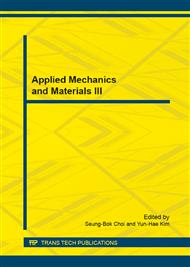p.964
p.968
p.972
p.979
p.983
p.988
p.992
p.996
p.1003
Numerical Study on the Surface Convective Heat Transfer of Mass Concrete Structure
Abstract:
The surface convective heat transfer of mass concrete is an important element of concrete structure temperature effect analysis. Based on coupled Thermal Fluid governing differential equation and finite element method, the paper calculated and analyzed the dependence of the concrete surface convective heat transfer on the air flow velocity and the concrete thermal conductivity coefficient. Results show that the surface convective heat transfer coefficient of concrete is a quadratic polynomial function of the air flow velocity, but influenced much less by the air flow velocity when temperature gradient is dominating in heat transfer. The concrete surface convective heat transfer coefficient increases linearly with the thermal conductivity of concrete increases.
Info:
Periodical:
Pages:
992-995
Citation:
Online since:
January 2015
Authors:
Price:
Сopyright:
© 2015 Trans Tech Publications Ltd. All Rights Reserved
Share:
Citation:


